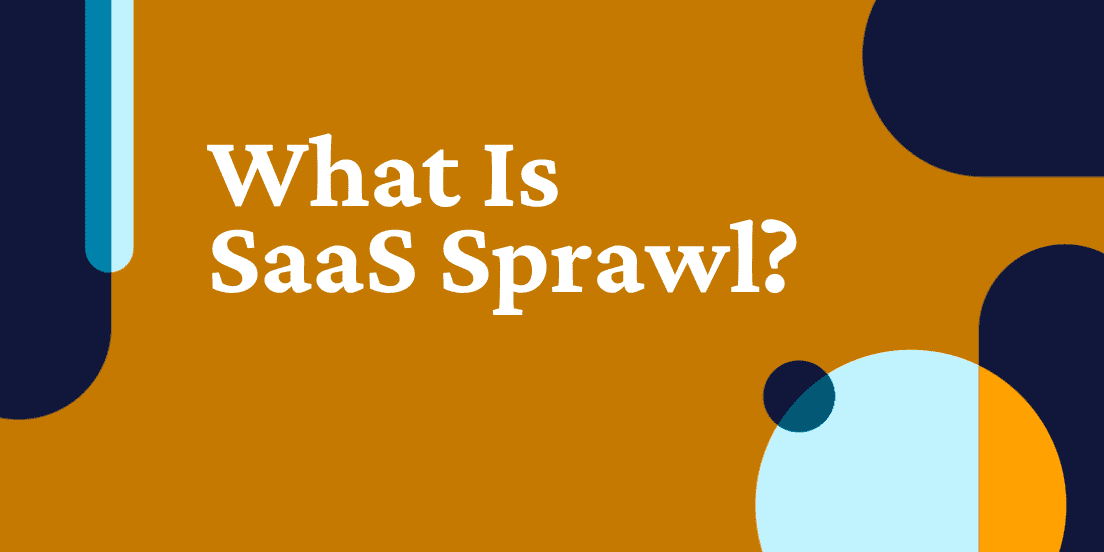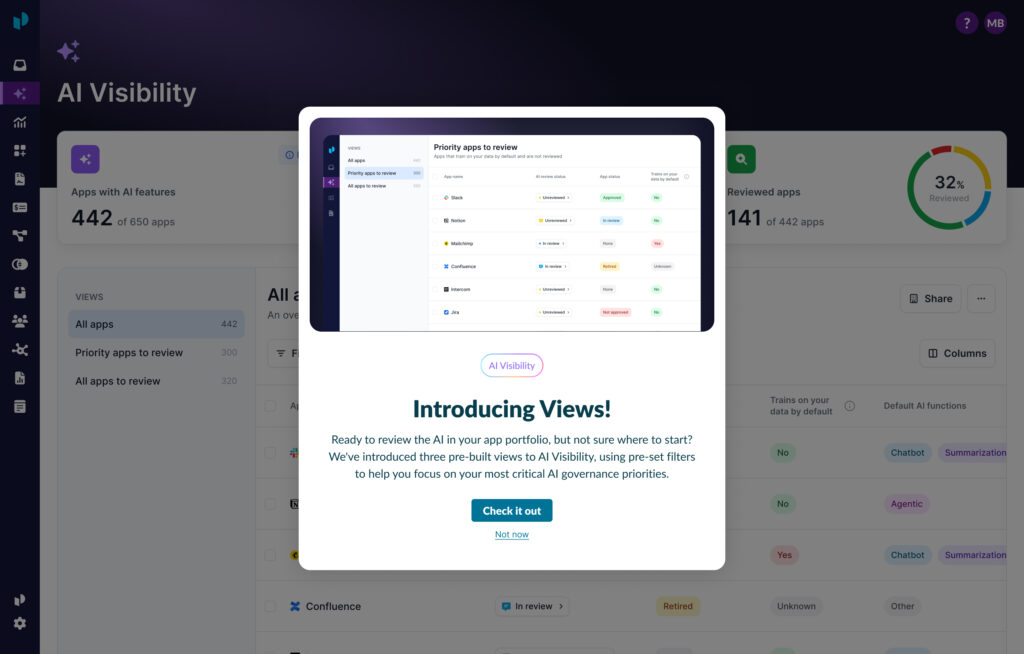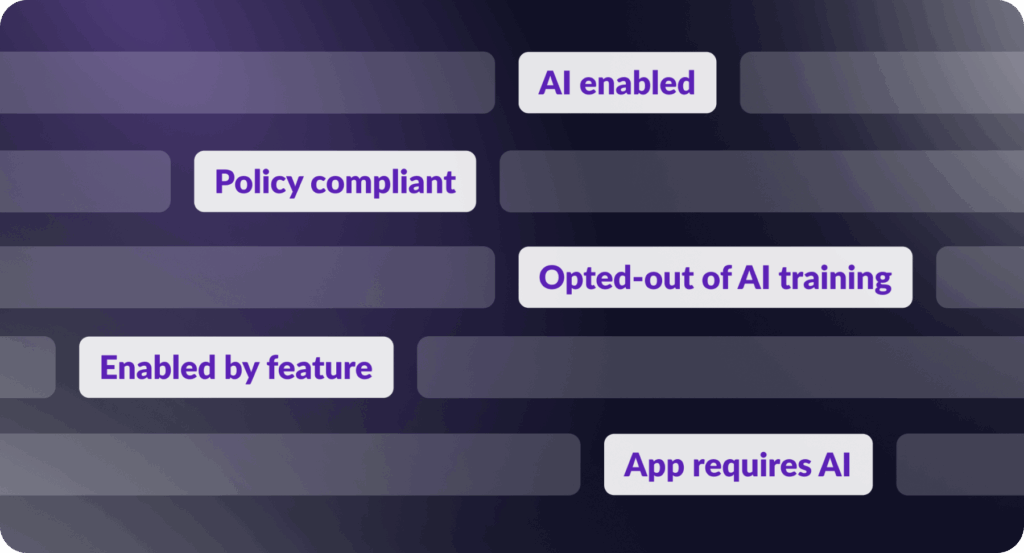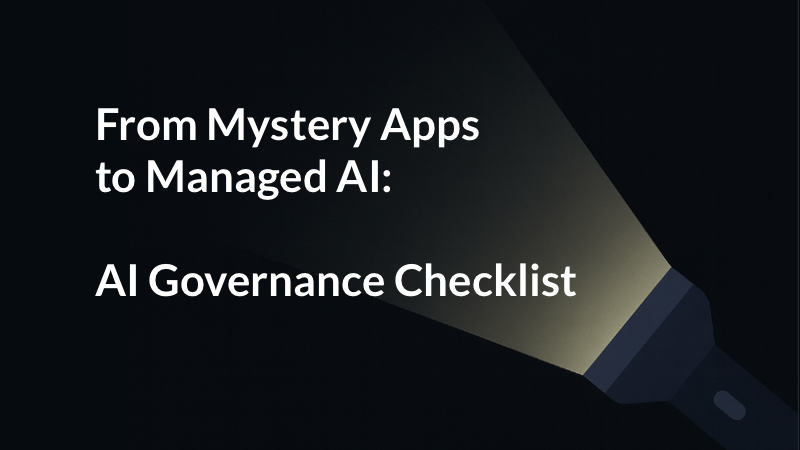
What Is SaaS Sprawl, and How Can You Get It Under Control?
Updated February 23, 2023
What is SaaS sprawl?
Most simply, SaaS sprawl is the proliferation of SaaS (software as a service) apps across an organization. It’s the result of businesses (at the company, team, and individual level) adopting an increasing number of SaaS apps to get work done.
By examining Productiv data, we found that the average SaaS portfolio in 2022 consisted of 315 apps. That is up 24% from 2021, in which the average SaaS portfolio had 254 apps.
We also discovered that the average enterprises spent over $55M on SaaS apps in 2022 — a number that is projected to grow 15–20% annually.
What’s the business impact of SaaS sprawl?
With so many different tools available to help solve any number of problems, it’s no wonder company SaaS portfolios continue to grow. And a future where most businesses run 100% on SaaS isn’t too far away. In fact, we have a number of customers today that only use SaaS apps.
But should SaaS sprawl have you concerned? After all, you like your apps. Your employees and coworkers like their apps. They increase productivity and efficiency. They unlock new insights and ways of working. However, expanding SaaS portfolios bring on a number of visibility, spend, and governance issues few are equipped to effectively manage.
SaaS sprawl with limited oversight leads to:
- A lack of alignment
- Overspend on SaaS
- Decreased productivity
- Increased security risks
How SaaS sprawl leads to a lack of alignment
There are two main ways rapidly growing SaaS portfolios hinder alignment across the organization.
Teams become siloed as they adopt their own tools to work, manage projects, and communicate. This fragmentation makes it difficult for teams to effectively collaborate cross-functionally. Additionally, disparate data sets can create data trust issues.
And at a higher level, IT, finance, procurement, and security leaders will face significant challenges trying to create and drive a SaaS strategy for the business without a source of truth for SaaS data. Teams can’t confidently align when each department is operating off of stale data and gut instincts.
How SaaS sprawl causes businesses to overspend on SaaS
The majority of wasted SaaS spend comes from redundant apps and unused licenses. Teams across the business end up purchasing multiple apps that provide the same or very similar functionality. We also see cases where two departments purchase the same app separately.
Additionally, a majority of the SaaS licenses made available to employees go unused. In 2022, we found that 55% of SaaS licenses on average are unutilized. That’s a huge amount of spend that isn’t bringing value back to the business.
How SaaS sprawl can decrease employee productivity
The employee experience can suffer when employees are regularly bouncing between different tools throughout their work day. And when businesses roll out apps across departments to help increase collaboration, for example, these new apps often have functionality that overlaps with apps already used by teams. This can make it difficult for employees to identify the correct tool or the data they need.
When Cornell University’s Ellis Idea Lab researched productivity tools, they found employees were spending 59 minutes every day searching for information in different apps and tools.
Moreover, an excessive amount of IT time is spent on app provisions and management. When employees are constantly requesting to purchase new apps or access to existing ones in order to collaborate with other teams or retrieve siloed data, it weighs heavily on IT resources. This pulls IT away from spending time on more strategic work.
How SaaS sprawl can increase security risks
Many SaaS offerings are built around a freemium model. While that encourages people to try out apps, the ease of doing so can impact your organization’s ability to keep data secure and maintain compliance and governance standards.
Additionally, we found that shadow IT makes up 53% of the average SaaS portfolio. These apps are purchased by business units and often exist outside of IT and procurement’s purview. As such, they may not reach the compliance and security standards of your organization. An IBM-Ponemon Institute study concluded that the average data breach costs a company north of $8 million. And Spin Technology found that around 49% of cyberattacks were due to shadow IT.
What is contributing to SaaS sprawl?
As more and more SaaS apps have arrived on the scene, teams are increasingly selecting and adopting tools on their own. And the ease with which SaaS apps can be bought and deployed has only sped up this process. As a result, more than half the apps in the average SaaS portfolios in 2022 were shadow IT.
We also found that individual departments now have 50–70 apps on average, with many teams gaining access to 10–15 more apps in 2022 than 2021. The move to a decentralized workforce during the pandemic — without a clear understanding of how work would be conducted in the long run — led many companies to increase their reliance on cloud-based tools in 2020 and 2021 to ensure employees remained connected and productive. But even now, as businesses settle into more predictable hybrid or remote models, the number of SaaS apps made available to employees continues to rise.
In addition to the number of apps per department, the number of apps per category has grown in most cases as well over the past year. Businesses are now averaging over 8 project management apps, 6 sharing & storage apps, and 4 messaging apps, to name a few.
As employees adjust from collaborating remotely to collaborating in a hybrid work environment, communication is one of the biggest challenges of the hybrid workplace. When departments purchase apps without coordinating with other teams, they can inadvertently create data silos that make collaboration harder. Two of the top growing app categories — spreadsheet & presentation and meeting & organizing — directly relate to communication and collaboration, implying organizations or the teams within them are still determining what works best.

What does a SaaS Management Platform look like?
Four tips for getting SaaS sprawl under control
Is your organization currently facing the challenge of how to rein in SaaS sprawl? Try these tips:
1. Improve SaaS visibility across the organization
It’s difficult to take control of SaaS sprawl without visibility into all of the apps currently in your portfolio, including tools not owned by IT. You need a complete picture of not just how many apps there are, but how much you’re spending on each and how they’re being used. This level of SaaS visibility takes your IT out of the shadows and turns it into systems intelligence.
One way to improve visibility is by auditing all SaaS apps currently in use across your organization. Get a better understanding of tools by monitoring your network for unknown apps, surveying employees, and partnering with finance to identify expensed app purchases. A platform like Productiv also provides these benefits without the hassle of a manual audit.
2. Align teams with a source of truth for SaaS insights
Making decisions based on gut instincts can not only negatively impact business performance, but it can also put strain on cross-functional partnerships. For example, procurement and IT may avoid collaboration if they each rely on their own siloed data and don’t find the other team’s data reliable. Additionally, if employees can’t quickly get information about the apps available to them, they’re likely to go on to purchase their own tools.
With a single source of truth for SaaS insights, IT, procurement, finance, security, and line of business leaders can confidently align on SaaS data to make better decisions together. And when IT and procurement teams deny new app requests or recommend license cuts to business leaders, they have the trusted data they need to back up their decision.
When everyone can clearly understand why decisions are made in regards to the company SaaS portfolio, it’s easier to put processes in place to control SaaS sprawl. Line of business leaders and employees will also be more likely to approach IT and procurement for their app needs instead of first turning to purchasing their own apps.
3. Create a vetting process for SaaS apps
Being realistic, we know that employee purchasing habits won’t change overnight. So how can organizations stay on top of SaaS when so many business units are buying apps on their own? First, focus on proactively vetting inbound app requests.
When a department asks for new tools, IT should have a consistent method to audit them for security, compliance, and other details. A vetting process ensures a timely response to app requests and gives IT a uniform framework for evaluating potential app purchases. It also makes it easier to compare requests against the tools you already have, limiting the likelihood of a duplicate app purchase.
4. Try a SaaS management platform
Consider a SaaS Management tool like Productiv. By using one of these platforms, you get a one-stop shop for visibility into all the apps in your portfolio, including:
- Which apps are being used by which teams
- How many licenses are being actively used
- How employees are engaging with app features
- What your licenses costs are and how they compare to your peers
- What apps you have in similar categories and how team usage compares
- License rightsizing recommendations for renewing apps
At the end of the day, you don’t need to be afraid of widespread SaaS use. Your focus should be on how to equip employees with the tools they need to be most productive while ensuring you’re maximizing the value of your technology investments. Being aware of SaaS sprawl and knowing how to manage it is the recipe to help you do just that without hurting your business.
How does a SaaS Management Platform help with SaaS sprawl?
It all starts with centralized and trusted visibility across the SaaS portfolio. With a SaaS Management Platform, businesses can gain a complete overview of all the SaaS applications being used in the organization, including information on who is using them, how they are being used, and the cost associated with each. This information helps organizations make informed decisions about which SaaS applications they should keep and which they can eliminate, saving on unnecessary expenses.
A SaaS Management Platform can also help organizations streamline their SaaS application procurement process by providing a centralized platform to manage SaaS contracts, automate license provisioning and renewal workflows, and provide the insights needed to drive vendor negotiations. These capabilities help to drive down the costs associated with the SaaS portfolio.
Many organizations have data security concerns when it comes to SaaS sprawl as well. Organizations can use a SaaS Management Platform to help ensure data security and compliance by providing real-time visibility into which apps employees use, which teams are using them, and the compliance certifications they have. This insight can help IT teams prevent sensitive data from being misused or accessed by unauthorized individuals.
Now that you know about SaaS sprawl, what should you do?
The more you can empower your employees to be productive, the better off you are. Sometimes that means having a lot of apps at their fingertips — a big SaaS portfolio isn’t a bad thing! But it’s critical to have insight into when the number of apps starts to negatively impact productivity, security, and the budget. Being aware of SaaS sprawl and knowing what to look for in order to manage it effectively is the key.
Schedule a demo of the Productiv SaaS Intelligence™ platform to learn more how we can help alleviate your SaaS sprawl pains.

What does a SaaS Management Platform look like?
About Productiv:
Productiv is the IT operating system to manage your entire SaaS and AI ecosystem. It centralizes visibility into your tech stack, so CIOs and IT leaders can confidently set strategy, optimize renewals, and empower employees.





